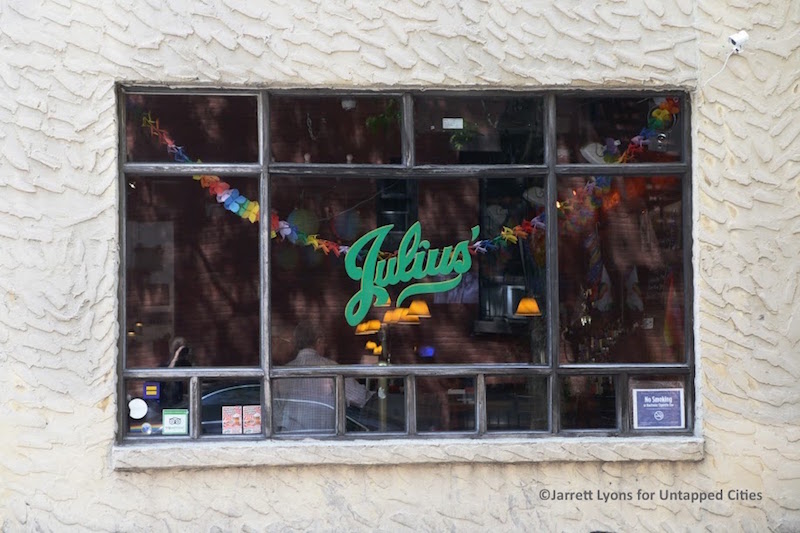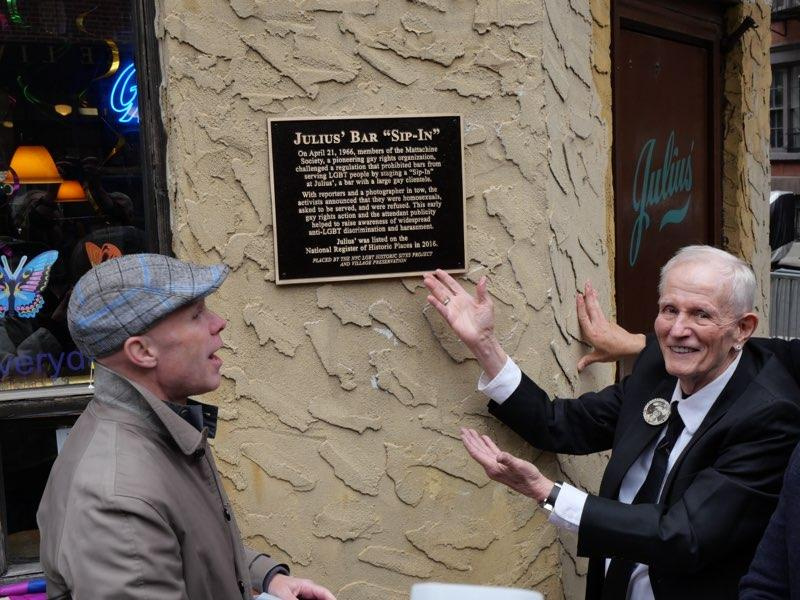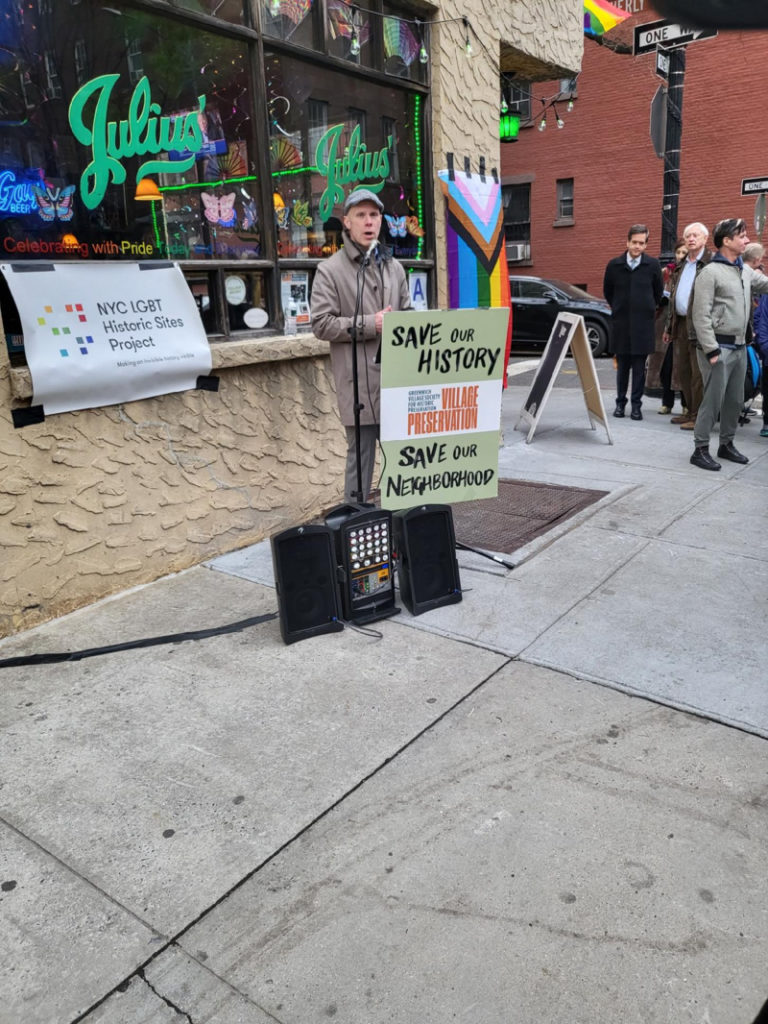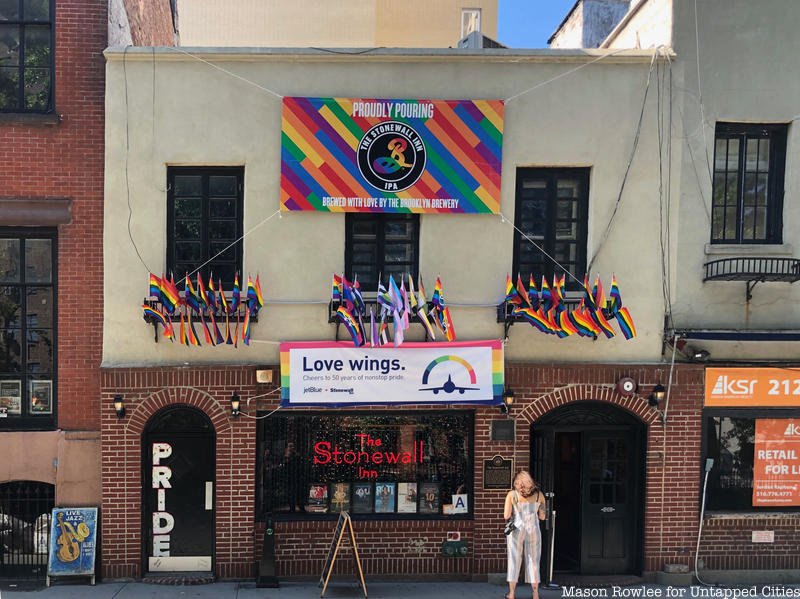After a 10-year campaign, Julius’ Bar has finally become a New York City Landmark. The decision was reached after a unamious vote at Tuesday morning’s Landmarks Preservation Comittee. The Greenwich Village watering hole at 159 West 10th Street (aka 188 Waverly Place) was unanimously voted is considered not only the oldest gay bar in New York City but also one of the oldest continually operating bars overall. Along with the nearby Stonewall Inn, Julis’ is an important location in LGBTQ+ history. The New York City Landmarks Designation comes on the same week, 10 years later, that Village Preservation submitted an application to the National Register of Historic Places.

Julius’ Bar was cemented in LGBTQ+ history after a 1966 “sip-in” protest. One of the earliest planned actions of civil disobedience for LGBTQ+ rights, the “sip-in” pre-dates the 1969 Stonewall Riots. The “sip-in” protest was inspired by “sit-ins” against racial segregation at lunch counters in the South. At the time of the “sip-in,” State Liquor Authority (SLA) rules prohibited bars from serving gay customers. On April 21, 1966, three gay men from the New York City Mattachine Society set out to visit four bars and intentionally defy the regulations in protest. The New York City Mattachine Society was a group organized in 1950 to promote gay rights. Julius’ was the last stop on their tour.
When the bartender approached the three men, they declared that they were gay. As expected, the bartender refused to serve them. Members of the press from publications like Village Voice, The New York Times, and the New York Post were on hand to photograph the peaceful, but powerful, demonstration. After this refusal of service, the three men filed a complaint with the city’s Commission on Human Rights, which eventually led to a landmark court case. In 1967, the state court ruled that the SLA rules violated gay patrons’ right to peacefully assemble and that bars couldn’t close down solely because of sam-sex kissing or touching. The tide-changing case helped push the gay rights movement forward.

Protester and former chairman of the Mattachine Society Dick Leitsch told NPR in 2008, “until this time gay people had never really fought back. We just sort of took everything passively and didn’t do anything about it. And this time we did it, and we won.” Julius’ Bar hosts an annual “sip-in” event each year to commeerate the events of 1966. In 2022, organizers and journalists who were part of the original “sip-in” attended the unveiling of a historic plaque at the site.

The building which houses Julius’ was built in 1864 as a private residence. Throughout its history it has served as a grocery store and a stagecoach shop, before becoming a bar in 1900. The bar became Julis’ in the 1930s. Though the bar was never exclusively a gay bar, it began to attract a predominantly LGBTQ+ clientele during the 1960s. Underground tunnels and seven different entrances and exits were used as escape routes during prohibition raids in the 1920s and gay bars raids in the 1960s.
Julius’ Bar was added to the National Register of Historic Places in December 2012 for its association with LGBTQ+ history. In 2013, Village Preservation formally proposed Julius’, along with the Stonewall Inn, the LGBT Community Center at 208 West 13th Street, and the former Gay Activists Alliance Firehouse at 99 Wooster Street, as the city’s very first designated LGBTQ+ landmarks. The Stonewall Inn became the city’s first designated LGBTQ+ landmark in 2015, followed by the LGBT Center and GAA Firehouse in 2019. Julius’ was the final designation to be attained. As a New York City Landmark, Julius’ Bar is gains landmark protection from demolition and alteration.

While the designation for Julius’ is a major step forward in preserving LGBTQ+ history, Andrew Berman, Executive Director of Village Preservation, notes there are still many other LGBTQ+ sites that still need protection, “including the former headquarters of the first national gay rights organization at 80 Fifth Avenue, the home of one of 19th-century New York’s leading crusaders for voting rights and freedom for African Americans at 50 West 13th Street, the former headquarters of the NYC Woman Suffrage League at 10 West 14th Street, and the New York Eye and Ear Infirmary at 218 Second Avenue, where groundbreaking care and services have been provided for the visually and hearing impaired for over 150 years.”
“It’s been a decade-long effort, but Julius’ finally has the landmark status it deserves,” said Berman, “This is a huge step forward in recognizing our city’s history as a refuge and home to the country’s largest LGBTQ+ community, and to our city’s crucial role in advancing civil rights movements and embracing and supporting marginalized communities. For too long New York’s LGBTQ+ history has been overlooked and ignored, particularly the role Greenwich Village played in advancing this critical civil rights movement. This is an integral part of New York and American history, and these stories and places must be honored and preserved.”
Next, check out 10 Notable Sites from NYC’s LGBTQ+ History Project and 10 Influecntial FIgures of NYC’s LGBTQ+ Rights Movement






